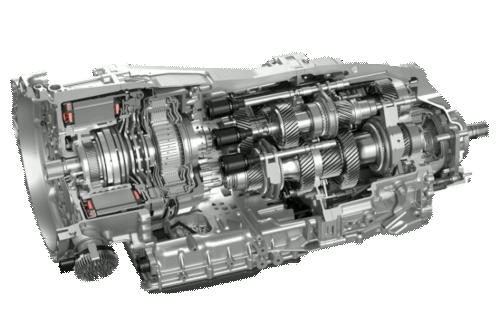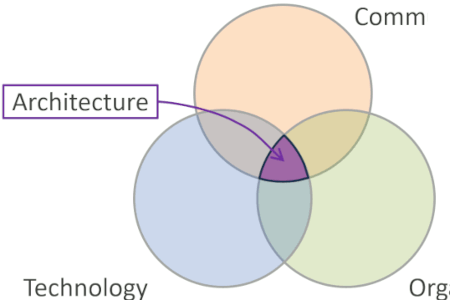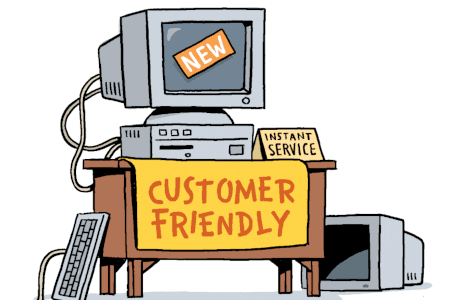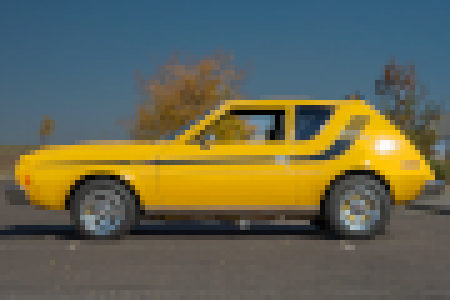Updated: Category: Transformation
I am somewhat known for using car metaphors, whether it’s the tractor racing the sports car, you having to move before you can steer, or coining the term “digital rpm’s” for the build-measure-learn cycle. There may be a number of reasons for this: first, I do like cars, though mostly as design objects and engineering marvels because I actually prefer the subway over being stuck in traffic; second, cars being some of the most complex technical systems easily found in most people’s daily lives makes them a suitable metaphor for IT; lastly, they’re mechanical, so you could, at least in principle, take one apart and see all the pieces and their respective functions clearly - something that isn’t easy to do with your software.
Shifting Gears: Transmissions
Car owners are historically split into two camps: those who prefer a manual gearbox and those who prefer an automatic transmission. The former gives more direct control over the car and (with a good driver) can be more fuel efficient as there’s a direct connection between engine and wheels. In the opposite camp are the folks who are not looking to build muscle in their left leg, but who want their car to just go. Even though the lines have blurred significantly (and electric cars don’t need all this stuff in the first place), most “serious” cars like trucks or Formula 1 cars use manual transmissions, which gives a hint as to what side I stand on.

Manual transmissions need a clutch to serve an important function: when shifting gears, e.g. from first to second gear, the engine speed and the transmission speed (connected to the wheels) don’t match. The reason is simple: in second gear the engine doesn’t have to spin as fast as it does in first gear - that’s why you shift in the first place. However, the car still moves at the same speed, so the transmission speed hasn’t changed. Depressing the clutch disconnects the two, allowing you to let the engine speed drop a bit, select the new gear, and then re-engage the clutch to re-connect the engine with the wheels. Modern transmissions can do all this for you, but the principle remains the same.
Organizations shifting gears
Many organizations are also looking to speed up: they are too slow to be successful in a world increasingly dominated by digital players who use short software release cycles to drive rapid innovation. Speeding up an existing organization isn’t merely a matter of pushing the gas pedal harder - that’ll just burst the boiler, although we’re admittedly mixing metaphors a little bit.
So, just like with an engine, these organizations need to “shift gears” in order to go faster. The difference between those gears may take the form of changes to processes and organizational structures or revisiting basic assumptions. To shift those gears, organizations also need a clutch: new and old processes won’t necessarily work together, or at least not at the same speed. This can be the case for example because financial, organizational, procurement, or approval processes aren’t designed to move quickly. Anyone involved in a transformation has seen them: while engineers celebrate the cloud’s elastic cost model, accounting is looking for predictability to lock down next year’s budget.
The organizational clutch
The organizational role of the clutch is usually played by a person or small team. This can be the head of innovation or more likely a regular IT leadership role who has taken a keen interest in speeding up the organization. In my prior job as Chief Architect, I was the clutch, working between different speeds of my team and the rest of the organization. You’ll find the person playing the clutch quite easily in most organizations undergoing a transformation.
Both in cars and in organizations, the clutch compensates for the difference in speed between two moving parts. This becomes clear when the car needs to start moving: a combustion engine cannot reduce its speed below a certain point, but the wheels aren’t moving at all while the car is standing, so the connection between engine and wheels has to be made gradually. The clutch allows the necessary slippage between the two parts until the car is moving fast enough to fully release the clutch pedal to make a permanent connection between engine and wheels.
Using the clutch is therefore a delicate affair: if you release the clutch too quickly, you’ll stall the engine. If you do it too gradually, you’ll cause excessive wear on the clutch: it’ll heat up and will ultimately burn out. The same happens when not shifting gears properly: if there’s a big difference in speed between engine and wheels, the clutch takes the heat, literally.
The clutch takes the friction
The person acting as the clutch also has to compensate for the differences in speed between two moving parts of the organization. This is a tough job and the person doing it usually also feels the heat.
As chief architect, I was running a new team in second gear inside an organization stuck in the first gear. It’s not surprising that I was taking quite a bit of friction as the organizational clutch:
- requisitioning server hardware on the organization’s “black market” (a chapter in The Software Architect Elevator)
- being accused of inhibiting project progress while trying to reduce tool diversity by building a platform
- convincing the team to go on voluntary on-call because their official job description didn’t include pager duty
- ordering MacBooks for the team on my personal credit card
- maneuvering around compensation constraints to reward people for their outstanding work and their rapidly increasing market value
- making detailed budget forecasts despite 95% of my department’s cost being fixed
- filling out forms to justify employees working longer than 10 hours on some days
Among other things, it earned me a most challenging but still most appreciated customer recognition from the HR team.
Despite it being a tough, and highly valuable, job, being the organizational clutch may not make you universally appreciated. As you operate in between two speeds, you’ll be viewed by the “1st gear” organization as an iconoclast: you’ll be charged with not following existing processes, being a naysayer, disturbing the collegial work environment, and causing all sorts of other trouble. The “2nd gear” organization you are building will complain that things aren’t moving as quickly as you promised, and while they appreciate their MacBooks, they still have to use a virtual Windows desktop to shell into production servers. Meanwhile, they won’t see most of the work you are doing in the background to reduce friction.
2-Speed IT burns the clutch
The clutch taking the friction also makes us wonder about so-called two-speed architectures. Having an organization run at two speeds for a long time will cause constant friction in the clutch and wear it out. The clutch is made for shifting gears, not for staying between gears for a long time. The same is true for organizations: two-speed architectures are meant as a time-limited transition state while shifting gears, not as a permanent state.

If you try to keep two speeds for a long time, you’ll end up like the guy in this picture: sadly, that’s the clutch smoking, not the tires, so he’ll be spending a good chunk of money on a new clutch. The same may happen to your organization: looking for a new person to be the “clutch” is going to be very difficult, and perhaps expensive, as such folks are very difficult to come buy. As I often joke: few folks are as stupid as myself to take such a role.
You might consider running your organizations at different speeds while the clutch is disengaged, i.e. the clutch pedal is fully pushed. However, just like in a car, while the clutch is disengaged there’s no power to the wheels - engine and transmission aren’t connected. So you can rev up the engine all you want, but your organization won’t speed up a single bit. If you feel that organizations won’t fall into this trap, think again: many innovations centers / engines have little to no connection to the main body. That’s why you might have been better off just buying FaceBook stock. Lastly, your foot will also get very tired from holding the pedal down.
Supporting the clutch
When I work with customers undergoing a transformation, one of the first things I do is to find their “clutch”. Because I know how hard their job is - I did it for over five years - I look for ways to support them, for example by helping them carry the message into the “first gear” organizations or setting up a better IT infrastructure that’ll help take them into a higher gear.
The “clutches” are generally extremely passionate and energetic people - otherwise they would have given up a long time ago. So, it’s important to not wear these people out.
Make More Impact as an Architect

The Software Architect Elevator helps architects and IT professionals to take their role to the next level. By sharing the real-life journey of a chief architect, it shows how to influence organizations at the intersection of business and technology. Buy it on Amazon US, Amazon UK, Amazon Europe




